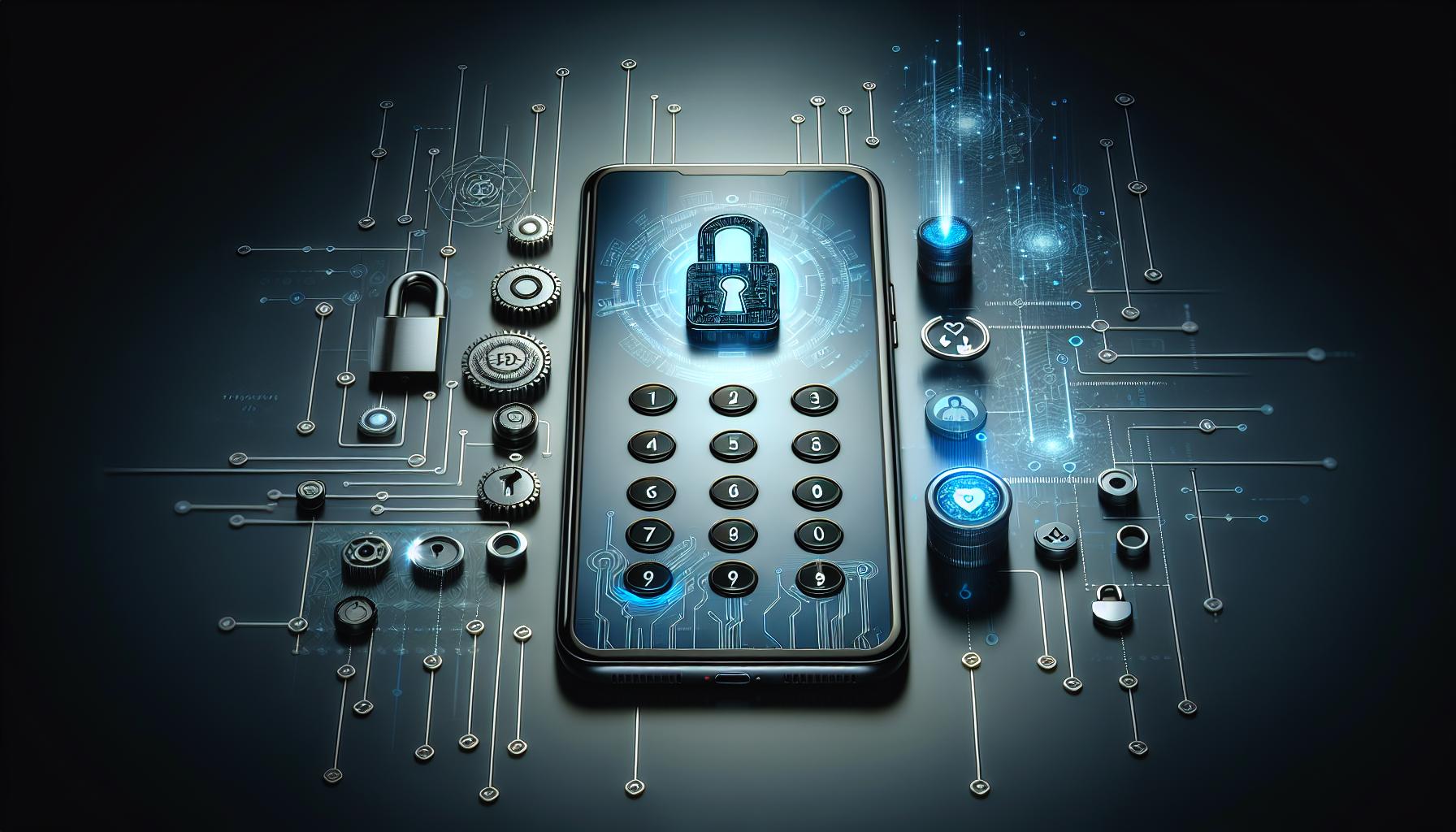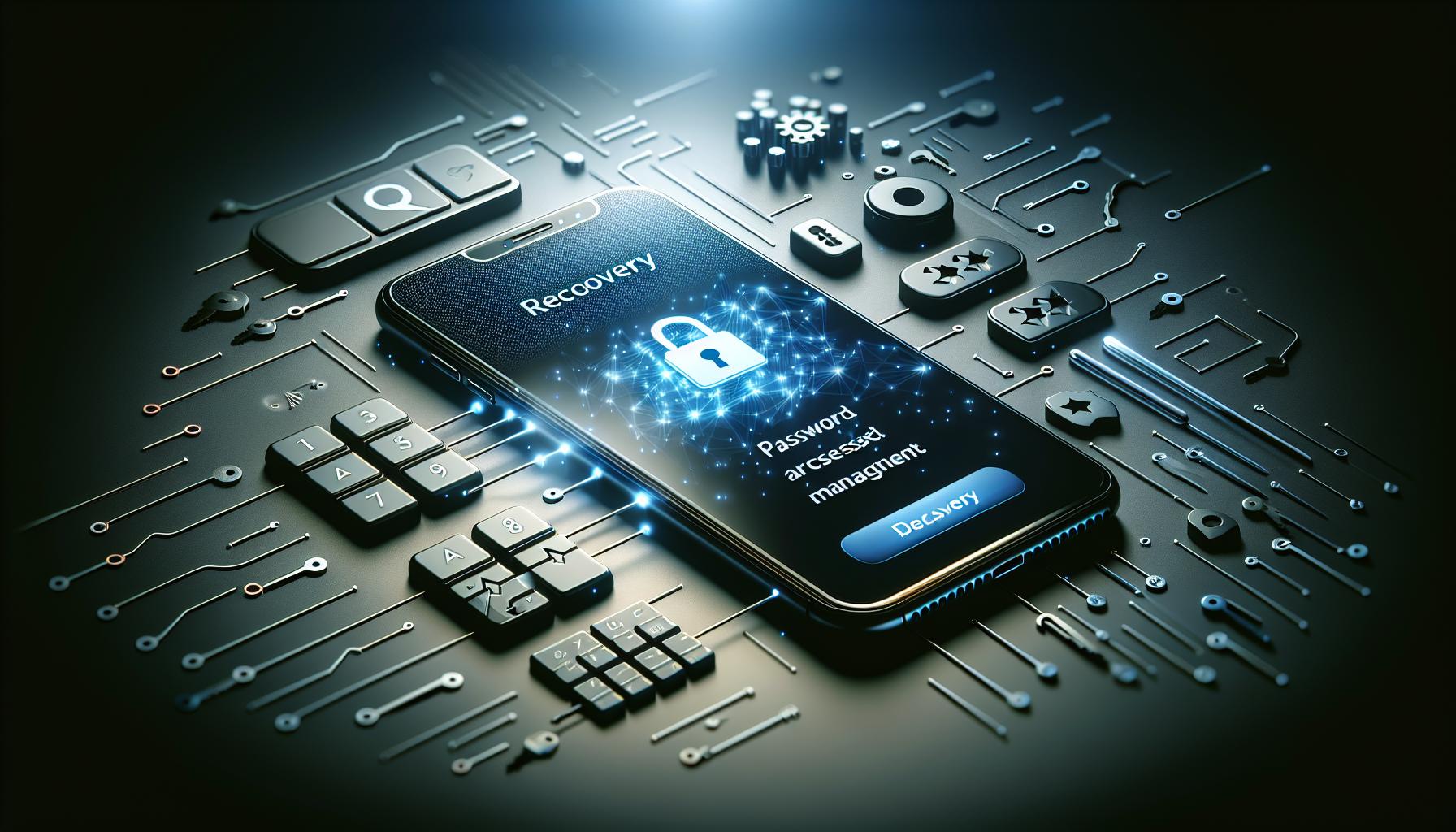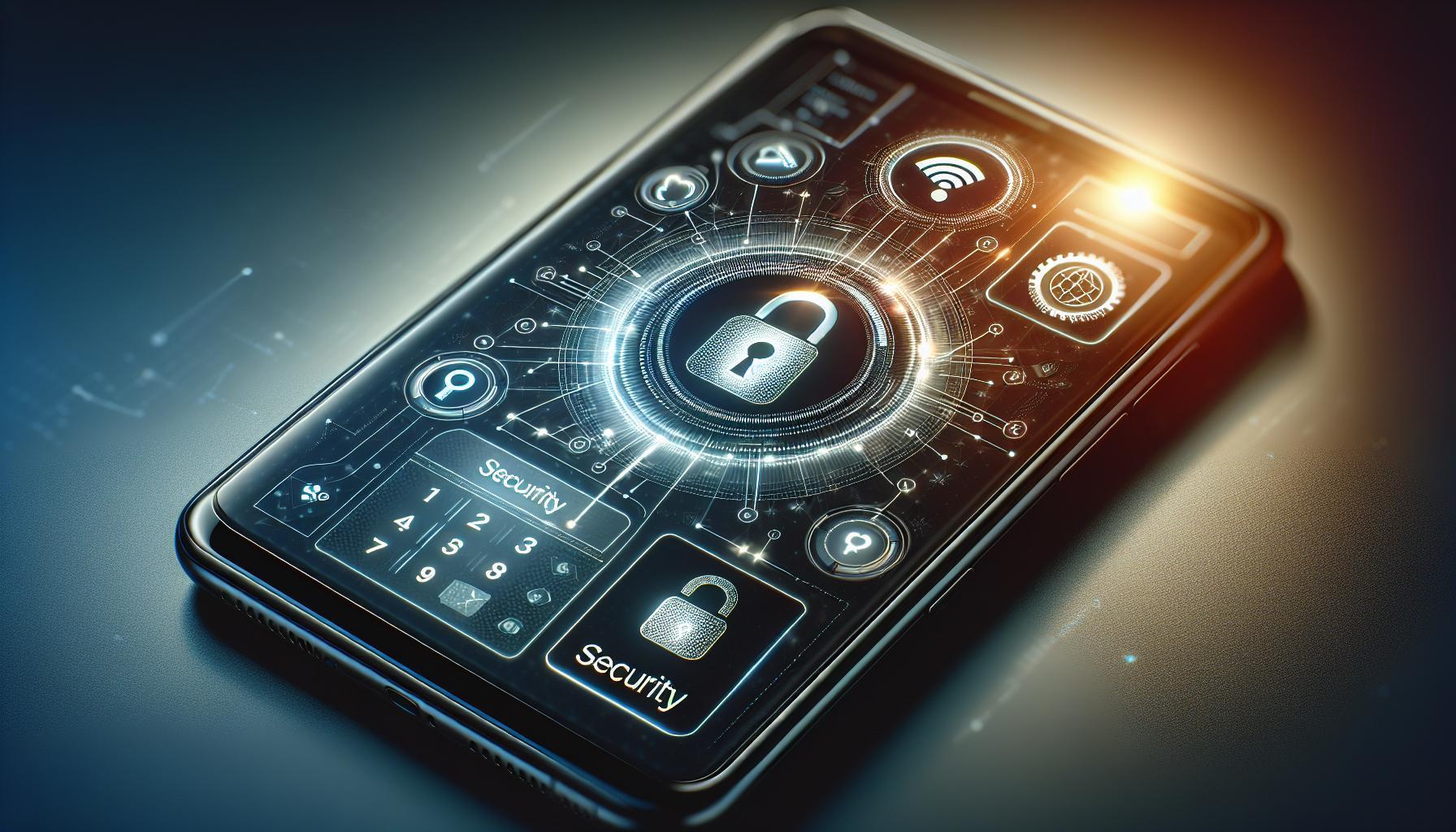Locked out of your iPhone due to a forgotten passcode? This common frustration can feel overwhelming, but regaining access is possible. Whether your device is disabled or showing a security lockout message, knowing the right steps to reset your password is crucial. This guide will walk you through the essential methods to unlock your iPhone efficiently and securely.
Understanding the Need to Reset Your iPhone Password
The frustration of being locked out of your own device is a common plight that many iPhone users experience. Forgetting your password can feel like a digital nightmare, but understanding the importance of resetting your passcode can turn this daunting situation into a manageable one. whether it’s due to a lapse in memory,a child or a friend mistakenly changing the passcode,or simply multiple failed attempts,there are valid reasons to consider a reset of your iPhone password. By knowing when and how to reset, you can regain access to your valuable data and ensure your device remains secure.
One critical moment when resetting your iPhone password becomes essential is when the device is disabled after too many incorrect passcode attempts. Engaging with this scenario requires awareness of the potential data loss, so it’s wise to have a backup in place. Users with iOS 15.2 or later can utilize recovery options directly through their device, reducing the need for additional tools such as a computer or iTunes. This feature not only emphasizes the importance of keeping your software updated but also highlights the necessity of knowing your options when you find yourself in a bind.
When preparing to reset your iPhone password,it’s crucial to differentiate between the various recovery methods available. As a notable example,if you recall your Apple ID but not your passcode,using the Apple ID to unlock your device can provide quicker access without the need for a complete factory reset. On the other hand, if you find that your only option is a hard reset, prepare yourself for the possibility of losing personal data if a backup has not been made. To avoid this, ensure regular backups through iCloud or iTunes as part of your routine smartphone maintenance.
is not just about gaining access—it’s about fostering a proactive approach to device security and personal data management. By equipping yourself with knowledge about recovery options, periodically backing up your data, and keeping your system current, you streamline the process and minimize stress should this inevitable situation arise.If you’re unsure about the process or need more detailed guidance, resources from Apple support and community forums are invaluable in providing step-by-step instructions and user experiences that can help you navigate these scenarios effectively.
Step-by-Step Guide: How to Reset Your iPhone Password
For many iPhone users, forgetting a password can feel daunting, especially when your device locks you out after multiple incorrect attempts. Fortunately, resetting your iPhone password and regaining access is a straightforward process.Whether you’ve encountered a “Security Lockout” screen or simply forgot your passcode, there are effective methods to restore access to your device. here’s how to reset your iPhone password with ease.
Methods for Resetting Your iPhone Password
When you’re ready to regain access to your iPhone, you can choose from several methods depending on your situation:
- Using iCloud (Find my iPhone must be enabled): If you had previously set up Find My iPhone, you can remotely erase your device which will also remove the passcode. Simply log into iCloud.com, go to “Find iPhone”, select your device, and choose “Erase iPhone”.
- Recovery Mode: If you don’t have Find My iPhone activated, you’ll need to use Recovery Mode. Connect your iPhone to a computer and force it into recovery mode by pressing the appropriate button combination for your model, then restore it through iTunes or Finder. This will erase your iPhone along with the passcode.
- Using an Apple Device: If you have another Apple device signed in with the same Apple ID, you can use the “Password Reset” feature available in the Apple ID settings to bypass the locked screen. Follow the prompts to reset your device.
Step-by-Step recovery Mode Instructions
For users opting to use Recovery Mode, here’s a detailed guide to help you through the process:
| Steps | Instructions |
|---|---|
| 1. Connect to computer | Connect your iPhone to the computer with a USB cable and open iTunes or Finder. |
| 2. Enter Recovery Mode | Depending on your iPhone model, press and hold the correct buttons until the recovery mode screen appears: |
| iPhone 8 and later | Quickly press and release the Volume Up button, then the Volume Down button.press and hold the Side button until the recovery mode screen pops up. |
| iPhone 7 and 7 plus | Press and hold both the Volume Down button and the Side button until the recovery mode screen appears. |
| iPhone 6s and earlier | Press and hold both the Home and the Top (or Side) buttons until you see the recovery mode screen. |
| 3. Restore your iPhone | When prompted in iTunes or Finder, select ‘Restore’ to erase your iPhone and it’s password. |
| 4.Set up your iPhone | Once erased, set up your iPhone as new or restore from a backup. |
By following these steps, you can effectively reset your iPhone password and regain access to your device. Remember to keep a backup of your crucial data to avoid loss in cases where your iPhone needs to be restored.
Important Pre-Reset Considerations: Backing Up Your Data
resetting your iPhone password can be a daunting task, especially if you’ve accumulated important data that you don’t want to lose. Before embarking on the process of regaining access to your device, it’s essential to consider how to effectively back up your data.this ensures that your memories, contacts, and important files are preserved and can be restored once your stolen access is regained.
Why Data Backup is Crucial
Backing up your data before performing a reset is not just a precaution; it’s a necessity. If you’ve forgotten your iPhone passcode, resetting your device will erase all content. Here are some key reasons to keep a backup:
- Data Loss Prevention: A reset will wipe your iPhone clean, and without a backup, you will lose any data stored on your device.
- Easy Restoration: Once you’ve reset your iPhone, restoring from a backup is a straightforward process, allowing you to get back to your daily routine swiftly.
- Peace of Mind: Knowing that your important files are safe can alleviate anxiety related to the reset process.
How to Back Up your Data
There are several methods to back up your data effectively before resetting your iPhone. Choose the approach that best fits your situation:
- using iCloud:
- Go to Settings > [Your Name] > iCloud > iCloud Backup.
- Ensure iCloud Backup is turned on, and tap back up Now to create a backup of your data.
- Using iTunes/Finder:
- Connect your iPhone to your computer.
- Open iTunes (or Finder on macOS Catalina and later) and select your device.
- Click on Back Up Now to save a backup locally.
What to Back Up
When preparing to reset your iPhone, consider the following types of data to ensure a thorough backup:
| Data Type | Description |
|---|---|
| Photos and Videos | Memories and critically important personal files stored in the Photos app. |
| Contacts | Your valuable connections that are easy to lose without a backup. |
| Messages | text conversations that may contain important facts. |
| Apps and Data | Submission settings and data that you would prefer to keep intact. |
By prioritizing data backup, you can mitigate the risks associated with resetting your iPhone in the process of regaining access. While the main focus often lies on the reset itself, ensuring that your data remains intact will make the entire experience considerably more manageable and stress-free.
Using Recovery Mode to Unlock Your iPhone
Unlocking an iPhone when you’ve forgotten the passcode can feel daunting, but utilizing Recovery Mode offers a straightforward solution. Recovery mode allows you to restore your device to its factory settings, effectively giving you a fresh start and the ability to access your phone again. This method is especially useful when you find yourself locked out and unable to remember your iPhone password.
To initiate this process, you’ll first need to put your iPhone into Recovery Mode. Here are the simple steps to follow, based on your device model:
Entering Recovery Mode
- iPhone 8 and later: Quickly press and release the Volume Up button, then the Volume Down button. Next, press and hold the Side button until you see the recovery mode screen.
- iPhone 7 and 7 Plus: Press and hold both the Volume Down and the side buttons until the recovery screen appears.
- iPhone 6s and earlier: Press and hold both the Home and the Top (or Side) buttons until the recovery mode screen shows up.
Once your device is in Recovery Mode, connect it to a Mac or Windows PC. Depending on your computer’s operating system, open Finder (on macOS Catalina and later) or iTunes (on earlier macOS or Windows). You’ll see a prompt indicating that your device is in Recovery Mode and options to either update or restore the device.For those looking to regain access without losing data, choose the Update option. If this doesn’t work, you may need to select Restore, which will erase all data on your device.
Post-Recovery Steps
After the restoration process is complete, you can set up your iPhone as new or restore it from a backup if you have one. If you opted for restoring, remember that you will lose any data not backed up, so this method is best executed when recovering access is more critical than preserving existing information. Following these steps provides a clear path to unlocking your iPhone, proving to be an essential skill for any iPhone user.
Using Recovery Mode not only resolves accessibility issues but also equips you with the knowledge to tackle future technical difficulties. The next time you encounter a locked screen, you’ll remember the steps needed to help regain access effortlessly.
Alternative Methods: Resetting Password via iCloud
When you find yourself locked out of your iPhone due to a forgotten password,it’s crucial to have effective methods at your disposal. One of the most convenient options is to reset your password using iCloud. This method not only allows for a seamless recovery but also helps maintain the integrity of your data. Designed with user-friendliness in mind, resetting your password via iCloud is an effective way to regain access swiftly.
To start the process, you need to ensure that your device is backed up to iCloud. This is important becuase some data might be temporarily inaccessible during the reset. Follow these straightforward steps once you’re ready:
Steps to Reset Your iPhone Password via iCloud
- Open the Settings app on your iPhone.
- Tap on your Name at the top of the Settings menu, which leads to your Apple ID settings.
- Scroll down and select Password & security.
- Tap on Change password. This option may require you to enter your current password if you remember it.
- If you can’t remember your current password, select Forgot password?, and follow the prompts to reset it using your iCloud account.
In the event that you have two-factor authentication enabled, you will receive a verification code on your trusted device or phone number, which you’ll need to enter to proceed. After you’ve completed these steps and successfully reset your password, you can regain access to your iPhone and all associated iCloud services, ensuring that your data remains protected yet accessible.
Additional Tips
In situations where you’re unable to reset your password through the device directly, visiting the iForgot Apple account recovery page may provide another viable solution. This resource can definitely help guide you through the process of recovering your account without additional risk to your data and privacy. Remember, maintaining your passwords and using key management tools can prevent such lockouts in the future.
By utilizing these methods, you can easily reset your iPhone password and regain access swiftly, ensuring that your digital life remains uninterrupted. For more detailed instructions or troubleshooting, considering checking the Apple Community forums for user insights and shared experiences in similar situations.
Troubleshooting Common Issues During the Reset Process
Even when following a well-laid-out procedure, the road to regaining access to your iPhone can sometimes encounter bumps along the way. Understanding the common issues that may arise during the reset process can save you time and frustration. Here’s a look at some of these hurdles and how to overcome them.
Device Not Recognized by Computer
One frequent issue occurs when your iPhone fails to be recognized by iTunes or Finder, which can stall the reset process. here’s how to address this:
- Check Connections: Ensure your USB cable is functional. Switch out cables or try different USB ports on your computer.
- Update software: Make sure that you have the latest version of iTunes or Finder,as older versions may not recognize recent iPhone models.
- Restart Devices: Sometimes a simple restart of both your computer and your iPhone can resolve the issue.
Error Messages During Reset
If you receive error messages while trying to reset your password, deciphering these codes can lead to effective solutions. here are a few common errors and their fixes:
| Error Code | Meaning | Solution |
|---|---|---|
| 4013 | Hardware issues, frequently enough relating to USB connections | Check cable and port connections, try a different USB port, or use a different computer. |
| 14 | File corruption during download | Delete the downloaded files and attempt the restore again; make sure no background processes are interfering. |
| 9 | Connection error with the software | Ensure your firewall or security software isn’t blocking the connection. |
Stuck in recovery Mode
Another challenge some users face is when their iPhone gets stuck in recovery mode,making a reset or restart impossible. If you find yourself in this situation, consider the following steps:
- Force Restart: Depending on your iPhone model, you can force a restart by pressing and quickly releasing the Volume Up button, then the Volume Down button, and then pressing and holding the Side button until you see the Apple logo.
- Try Again: Once your iPhone restarts, try the reset process again. If it still does not respond, you might need to reconnect it to a computer and repeat the recovery process.
Understanding and navigating these common issues while trying to reset your device can make the process smoother and more efficient. By preparing for potential setbacks, you can quickly regain access to your iPhone and get back to enjoying your device.
What to Do After Resetting Your Password: Enhancing Security
Resetting your iPhone password is only the first step on your journey to regaining access to your device. With the rise of cyber threats, it’s more important than ever to take proactive measures to enhance your security after you’ve successfully completed the reset. Securing your device is essential to protect personal data such as photos, messages, and financial information from unauthorized access.
Update Your Security Settings
Once you’ve regained access to your iPhone, the next logical step is to review and update your security settings. Here are some immediate actions you can take:
- Enable Two-factor Authentication: This adds an extra layer of protection by requiring you to provide a second form of verification (like a code sent to your trusted devices) when logging into your Apple ID.
- Review App Permissions: Go through the list of apps that have access to your data and revoke permissions for those you no longer use or trust.
- Change Your Passwords: After a password reset, it’s wise to update passwords for other critical accounts associated with your device, such as email and banking.
Keep Software Up to Date
Another effective way to enhance your security is by ensuring your iPhone’s software is up to date. Apple regularly releases updates that include security patches designed to protect your device from vulnerabilities.To check for updates, navigate to Settings > General > Software Update. If an update is available, install it promptly.
| Update Frequency | Importance |
|---|---|
| Monthly | Critical bug fixes and security enhancements. |
| Quarterly | Major feature updates and user experience improvements. |
| As required | Emergency updates for severe vulnerabilities. |
Utilize Strong Passwords and Password Managers
After resetting your password, it’s also a grate prospect to strengthen it. Use a mix of uppercase letters, numbers, and symbols to create a strong password. For additional security,consider using a password manager.These tools help generate complex passwords and store them securely, making it easier for you to maintain unique passwords across different accounts.
By implementing these strategies after resetting your iPhone password, you’re taking necessary steps to secure your device and protect your personal information from potential threats. Remember, a proactive approach to security is your best defense in today’s digital landscape.
Tips for Creating a Secure and Memorable Password
Creating a password that is both secure and memorable can often feel like a daunting task, notably with the growing number of accounts we manage. the importance of this challenge is highlighted by the increasing prevalence of cyber threats, making it crucial to develop effective strategies for password creation. By employing certain techniques, you can craft passwords that not only protect your sensitive information but are also easier to remember.
Techniques for Crafting Secured Passwords
When designing your passwords, consider implementing the following strategies:
- Use Passphrases: Create a sentence or phrase that is meaningful to you but hard for others to guess. For example, “MyDogRoverLoves2PlayFetch!” combines a mix of words, numbers, and special characters.
- Incorporate Variability: Take a base password and add variations based on the account you are using. As an example, if your main password is “Coffee123!”, you could modify it to “Coffee123!Amazon” for your Amazon account.
- Leverage Memory Aids: Think of an easily memorable word or acronym (like your favorite song lyrics) that you can transform by substituting letters with numbers or symbols (e.g., “LetItBe” becomes “L3t!tB3”).
- Avoid Common Patterns: steer clear of using easily guessable information, such as birthdays or sequential numbers. Instead,choose unrelated words or obscure references known only to you.
Utilizing password Managers
Considering the difficulty of remembering multiple complex passwords, utilizing a password manager can be an invaluable tool. These applications generate and store your passwords securely. They can also help you create unique passwords for every account, reducing the risk associated with password reuse.Many password managers offer additional features, like automatic logins and breach alerts, enhancing your overall security while maintaining convenience.
Regularly Updating Passwords
Make it a routine to update your passwords periodically, especially for sensitive accounts like banking or email. This practice minimizes the risk of unauthorized access, particularly if a data breach occurs. Additionally,consider enabling multi-factor authentication on your accounts for an extra layer of security,ensuring you not only rely on a secure password but also on another verification method.
By implementing these strategies, you can confidently navigate the complexities of password management, reducing the anxiety and risks associated with account security. Whether you’re learning how to reset your iPhone password or managing various online accounts,strong passwords are your first line of defense against cyber threats.
Q&A
How do I reset my iPhone password?
To reset your iPhone password, you can use iTunes, Finder, or iCloud. First, connect your iPhone to a computer and put it into recovery mode. Then restore your iPhone using your computer, which will erase it and remove the password.
After the reset, you will be able to set up your iPhone as new or restore it from a backup. This is especially useful if you forget your password and need to regain access — simply follow the restoration process to get started.
What is the process for regaining access to my iPhone with a reset?
The process involves erasing your iPhone to remove the password. You can do this via iTunes,Finder,or iCloud. Once the device is reset,you can reconfigure it without the password.
To erase your iPhone, ensure you have your device connected to a computer where iTunes or Finder is installed. This straightforward process allows you to return to using your iPhone with a new password.
Why does my iPhone say it’s disabled?
Your iPhone may be disabled due to multiple incorrect password attempts. When you provide the wrong password too many times, the device locks to protect your data.
This security feature prevents unauthorized access and can be frustrating. If you encounter a disabled iPhone,you will have to reset it to regain access,following the methods outlined in our article on how to reset iPhone password: regain Access to Your iPhone with a Reset.
Can I recover my data after resetting my iPhone?
Yes, if you have previously backed up your iPhone, you can recover your data after a reset. Apple offers iCloud and iTunes as backup solutions to save your information.
After resetting your iPhone,during the setup process,you can choose to restore from your backup,which allows you to recover documents,photos,and apps. If you have not backed up, unfortunately, the lost data cannot be retrieved post-reset.
What are the alternatives to resetting my iPhone password?
Alternatives include using Apple’s built-in features, such as ‘Find My iPhone.’ If you have enabled this feature, you can initiate a remote reset of your iPhone.
This method is valuable as it lets you clear the device remotely without needing physical access to your iPhone. Remember to have your Apple ID credentials handy, as you will need them to verify your identity.
Will resetting my iPhone delete all my data?
Yes, resetting your iPhone erases everything, including all your data. Though, if you’ve backed up the device beforehand, you can restore your data afterward.
this emphasizes the importance of regularly maintaining backups to preserve your digital information. Before proceeding with a reset,always consider if there is any way to avoid losing essential files.
Can I unlock my iPhone without losing data?
Unfortunately, if you forget your password, unlocking an iPhone typically requires a reset. This is a safety precaution to protect your data.
However, always explore whether you have enabled biometrics or managed to remember your credentials through recovery options, which might help you regain access without erasing your data.
To Wrap It Up
regaining access to your iPhone after forgetting your password can be a straightforward process if you know the steps to take. You have options available, whether using your Apple ID for devices running iOS 15.2 or later, or leveraging your computer for other setups. Remember, it’s essential to back up your data regularly to avoid potential data loss during a reset. By following the outlined methods, including using recovery options provided by Apple, you can efficiently manage any security lockouts and restore your device.
For more detailed guidance, continue to explore our resources on iPhone security and data management.If you’re facing challenges or have further questions,don’t hesitate to reach out or browse through additional articles to enhance your understanding. Regaining control of your device is within reach!







